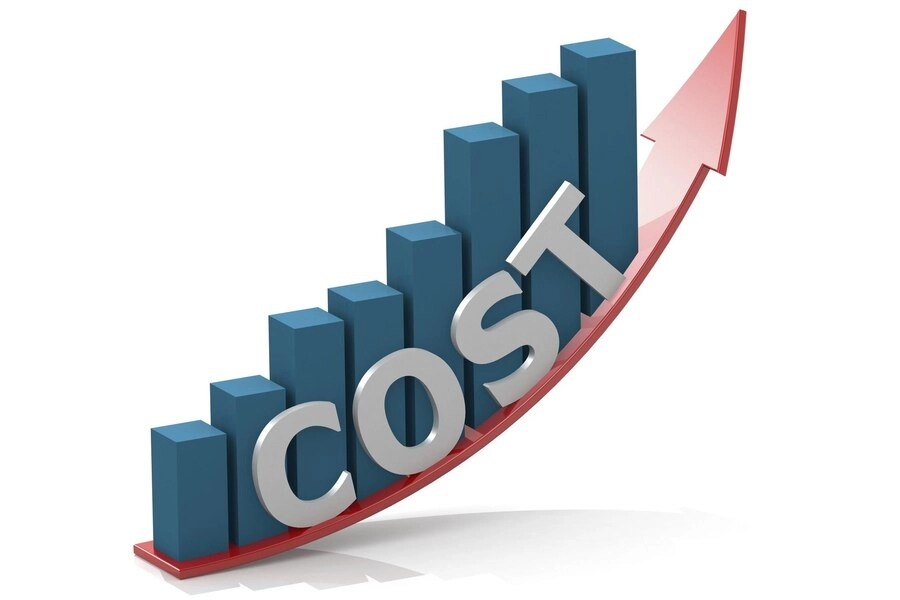How to use opportunity cost calculation in your life
Many times, we seem to have to choose between two things. And there is always one trade-off or the other to make. And we never have all we want because everything in life has an opportunity cost.
Opportunity cost is otherwise known as forgone alternatives, represents the value of what you give up for another choice, highlighting the trade offs in the decision making process. It is an economic term or concept that describes the art of better decision making in life and other situations, enabling business leaders to make more profitable investment choices.
Besides opportunity cost being an economic concept, is there a way to use this type of calculation in your personal finance and business decisions? Keep reading to learn more.
What is the opportunity cost?

It is one of the foundational concepts in economics, immediately obvious in past decisions, and borders on the best-forgone alternative. Usually, it originates from the existence of scarcity and scarce resources. Because human wants are insatiable, people must use limited resources wisely, making business decisions that account for implicit costs and explicit costs.
Therefore, they must satisfy some at the expense of others, applying the opportunity cost formula to determine the expected returns of different investment opportunities. It means that when we pursue one investment over another, the forgone activity becomes the opportunity cost of the pursued training.
How Opportunity Cost Functions
While making decisions, investors try to consider the potential opportunity cost, but the calculation is more accurate with the benefit of hindsight, allowing for a clearer opportunity cost analysis and investment chosen. It is easier to compare the expected return on a chosen investment to the foregone alternative when you have real numbers to work with, aiding in more profitable decision making.
Assume your aunt had to choose between investing in Company ABC and Company XYZ, both presenting different potential investments and expected returns. She decides to purchase ABC. ABC has returned 3% a year later, while XYZ has returned 8%. In this case, she can easily calculate her opportunity cost to be 5% (8% - 3%).
Investors frequently use opportunity cost to compare investments, but the concept can be applied to a wide range of scenarios, making it a key element in strategic planning and comparative advantage. If your friend decides to take a year off from work to return to school, for example, the opportunity cost of this decision is a year's worth of lost wages, reflecting the lost opportunity for actual performance in their job. Your friend will weigh the opportunity cost of lost wages against the advantages of obtaining a higher education degree.
Types of opportunity cost

Often, the forgone alternative may involve some monetary compensation, highlighting the implicit cost versus explicit costs in the opportunity cost analysis. Other times, it may not require any financial payment. The former gives us explicit cost, while the latter provides implicit cost. Both types of cost give rise to two significant types of opportunity cost: explicit costs and implicit costs, essential for understanding sunk costs and economic profit.
Explicit cost
This type of forgone alternative usually involves a kind of monetary compensation, essential in calculating opportunity cost and making profitable investment choices. Typically, the money payment compensates the one who has incurred the original opportunity cost by forgoing some satisfaction, reflecting sunk costs and their impact on business decisions. As a result, the money paid transfers the opportunity cost of the foregone alternative from the person receiving payment to the one making or offering the amount.
A life example that explains the explicit cost
A worker in a company is supposed to be the original bearer of the opportunity cost because the worker has to forgo comfort and time for pleasure. However, because the worker is paid wages, the forgone alternative paid in monetary terms shifts to the employer who makes payment. Therefore, the employer bears the explicit cost.
Implicit cost
This type of opportunity cost does not involve any monetary compensation. In this type of forgone alternative, the person who should initially bear the forgone alternative doesn't get any financial compensation, illustrating the concept of implicit costs. And the opportunity cost does not shift to anybody since there is no one to pay for it with money.
A life example that explains the implicit cost
A worker who works at his primary job and at the same time works the closing shift at his father's company. Because he works the closing shift at his father's company, he does not get to have extra time for leisure. Since his father's company worker works to build the family enterprise, he does not get any wages. As a result, the forgone time for leisure is his implicit cost, which must be considered in opportunity cost analysis.
Opportunity Cost Limitations

The primary limitation of opportunity cost is the difficulty in estimating future returns, which affects the accuracy of projected performance and expected return. You can study historical data to get a better idea of how an investment will perform, aiding in more accurate opportunity cost compares and investment chosen. No investment can be predicted with 100% accuracy.
The consideration of opportunity cost remains an important aspect of decision making, but it isn't accurate until the decision has been made and the two investments can be compared.
While the concept of opportunity cost applies to any decision, it becomes more difficult to quantify when non-monetary factors are considered, complicating the decision making process and risk compares. Assume you have two investment options.
One offers a conservative return but only requires you to lock up your money for two years, whereas the other will not let you touch your money for ten years but will pay a higher interest rate with a slightly higher risk. In this case, the differences in liquidity will be included as part of the opportunity cost formula, influencing investment opportunities and potential benefits.
The greatest potential cost in terms of liquidity is the possibility of missing out on a wonderful investment opportunity in the future because you can't get your hands on your money that's locked up in another transaction. That is a genuine potential cost, but it is difficult to measure in monetary terms, therefore it does not fit neatly into the opportunity cost equation.
How to calculate opportunity cost
To correctly calculate this cost, we need explicit knowledge of the cost and benefits of all options available, using the opportunity cost formula: Opportunity Cost = Return on Best Forgone Alternative - Return on Chosen Option. Working out this cost per time guides both individuals and corporate entities in more profitable decision making. And sound decision making brings progress and profit.
Mathematically, we can derive or calculate the forgone alternative by subtracting the return on chosen option from the return on the best-forgone alternative, using the opportunity cost equation to ensure profitable investment choices.
How to use opportunity cost calculation in your life.
Trying to use this cost calculation in your life would mean accounting for the the opportunity cost examples in your life or business. Even though we have an established formula for calculating this cost, most people fail to give it the attention required. The reason is that it is a very abstract concept. As a result, sometimes, it can prove intangible and therefore easy to neglect.
What does an opportunity cost estimate reveal?

You can use opportunity cost to help you with the following:
Calculate missed opportunities
The loss of opportunity is the most important information you can obtain from an opportunity cost vs stock market estimate. It allows you to see the real-world repercussions of selecting one of two options. Calculating the opportunity cost represents investing in new machinery rather than improving old machinery, for example, might assist you in identifying the potential rewards of your investment. Because older machinery may be more prone to breakdown, purchasing new machinery may make more economical sense. Knowing how to spot these possibilities enables more informed business decision making to maximize resources and avoid sunk cost refers.
Determine the relative cost of various investment alternatives.
Another advantage of opportunity cost assessment is that it allows you to compare the relative costs of different investments as well as the possible rewards of each. This information enables you to select the investment that provides the greatest benefit to you, helping you make a profitable investment choice with the help of a financial advisor.
For example, a company may evaluate purchasing two new programmable sewing machines or five used non-programmable alternatives for the same price. After assessing current and projected orders, the company believes that the five old machines are preferable since they can boost output while reducing training time.
Compare the prospective returns on investments
Calculating opportunity costs can help you determine the potential profitability of alternative course of investments. For example, a company may wish to invest in new equipment or securities. Calculating the opportunity cost of both investments helps illustrate to planners what the business might lose if either option is chosen, including potential impacts on cash flow.
How Paystubsnow helps entrepreneurs manage cost-effectively
As a business owner, because you incur certain costs due to paying employee salaries, it becomes necessary to understand how much you spend. By paying employee salaries, the original opportunity cost focuses on your employees is transferred to you that pays wages. Therefore it is essential to understand how much of the explicit cost you incur indeed.
With Paystubsnow, you can use paystub generator for your employees as well as electronic invoices to stay on top of customer or client obligations. Some other utilities you can derive from the online paystub generator are 1099 and w2 forms. All of which you can get in your email within minutes of generation.

